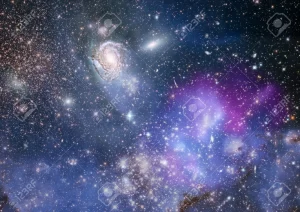
On a computer click on image top right for more pictures
Where good will prevails, all share a yearning to know more about the origin of the world and the future destiny of its inhabitants.
The great physicist Albert Einstein was often a voice of wisdom. Einstein would say: “There are only two ways to live your life. One is as though nothing is a miracle. The other is as though everything is a miracle.”
The purpose of this post is twofold, the first is to suggest that Einstein’s two ways of living did abide together in a special person who was both a religionist and a scientist. For him, the scientific field was restricted to the investigation of the temporal, material world, a domain to be measured and observed. Not for him to seek to apply scientific discoveries to confirm and support the understandings of philosophers and theologians. On his spiritual and religious side, he could choose to delve into things beyond the physical. Afterward, he simply returned with new energy to the business of science and its methodology. More about him shortly.
The second and related purpose of this post is to celebrate the innumerable science observations and discoveries of the Hubble Space Telescope, together with the recent launch of the James Webb Space Telescope. JWST has been deployed so that astronomers may more clearly observe light and darkness from further out in the universe.
With older instruments, scientists had begun to speculate that over millions of years of time an ever-expanding material universe had developed and was growing more complex. Their hypothesis was that the universe began with the explosion of a “cosmic atom”. Among the first group to advance the Big Bang Theory was a much-loved priest, pastor, and mathematician, Belgium-born Fr Georges Lemaitre (1894 – 1966). Father Lemaitre helped lay early foundations for the technology later used to develop and launch the Hubble platform. A friend and collaborator of Albert Einstein, he is the person considered above: the religionist and the scientist, an aspirational model for all such persons, Fr Georges Lemaitre.
The Hubble Space Telescope appeared to verify the Big Bang Theory. JWST is now sending back images from further away, which appear to show that galaxies in the early universe are more plentiful, and a little more massive and structured than expected. It is suggested that because these images come from so far away over such a long span of time, it is very probable that the first galaxies were smaller and grew larger over the ages, just as Big Bang cosmology predicts. If this is true, JWST’s observations are supporting the Big Bang Theory, leaving future scientists with the task of providing in greater detail models of how the universe has assumed its present complex shape.
How far humanity came in the past millennium is a marker of how much further humanity might go as these next thousand years roll by. If only they do roll by! Our telescopes today already capture the demise of distant worlds. If demise were to happen to our galaxy, would we have the means of escaping to a new far away galaxy still in its prime? Humanity would never be able to do so without first developing new ways of travel, the yet undiscovered “star trek technology”. While pondering origins, what about an end? Scientists can imagine it from what they now observe through their telescopic lenses, far-off galaxies in a state of collapse.
Religious people, all people, should wish authentic science in this 21st century every success in the task of uncovering new facts, formulating new theories, and developing innovative technologies. Providing hope for humankind? Yes? New light too on the glory of God? Of course! Scientific work towards human outreach into the universe is a logical extension of the power accorded the first human beings in the Holy Bible creation story. They were to live all over the earth and bring it under their control. This is the divine charge in Genesis Chapter 1, verse twenty-eight.
Such is the becoming future foreseen over a hundred years ago by Gilbert Chesterton. Here is the concluding passage of one of his many special books: “We shall be left defending not only the incredible virtues and sanities of human life, but something more incredible still, this huge impossible universe which stares us in the face. We shall fight for visible prodigies as if they were invisible. We shall look on the impossible grass and the skies with a strange courage. We shall be of those who have seen and yet have believed.”
Meanwhile, I pray that more people than ever before will join in praise of the Lord of the prophet Daniel:
And you, sun and moon, O bless the Lord.
And you, the stars of the heavens, O bless the Lord.
You are blest in the firmament of heaven.
To you glory and praise for evermore. Daniel Ch 3
Want to read more about Fr Georges Lemaitre and his place in Science & Religion?
Visit: Georges Lemaitre: Father of the Big Bang | AMNH
For further insight into CONSIDERING THE RELIGIONIST & THE SCIENTIST
Visit: At Vatican Observatory Website